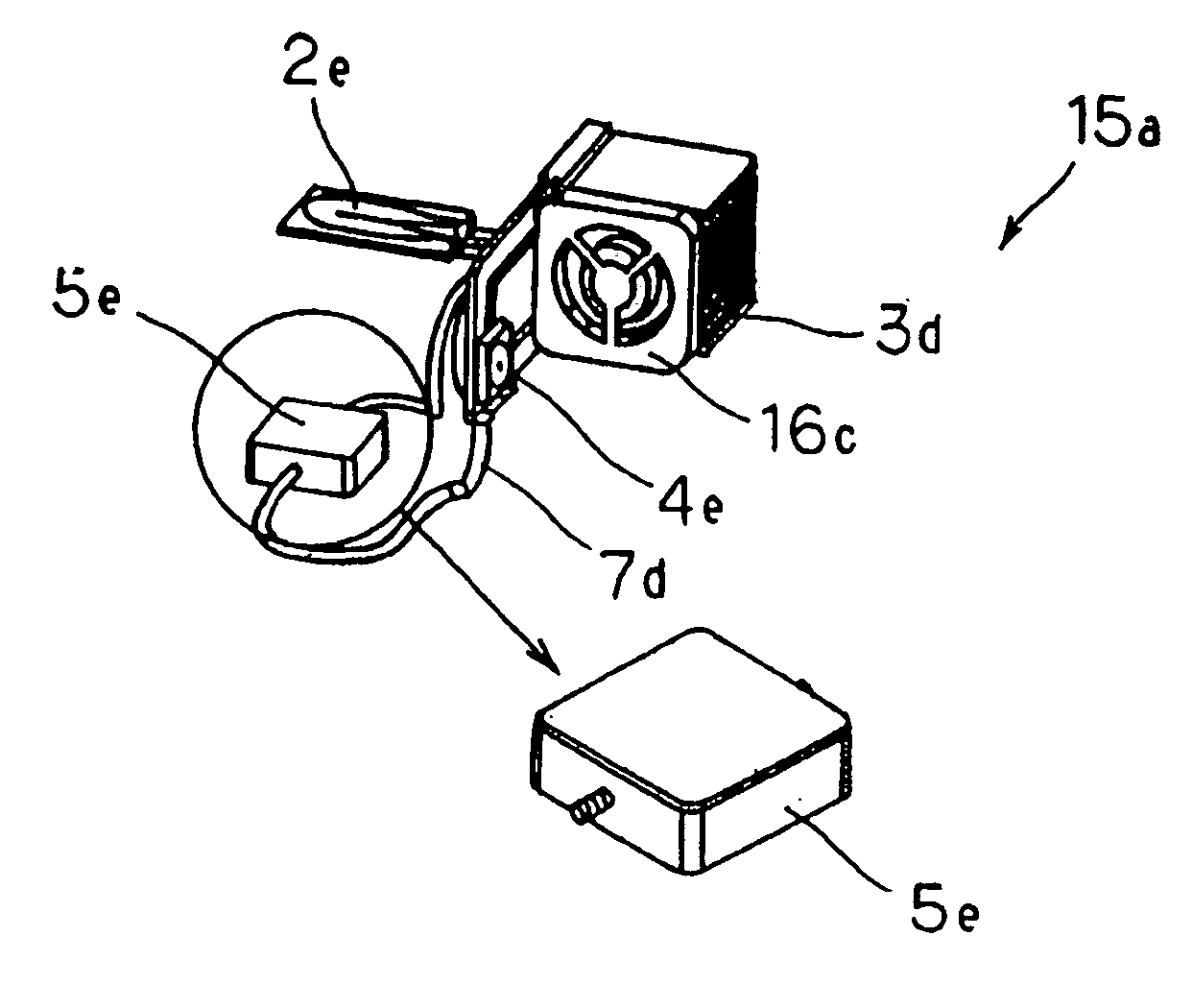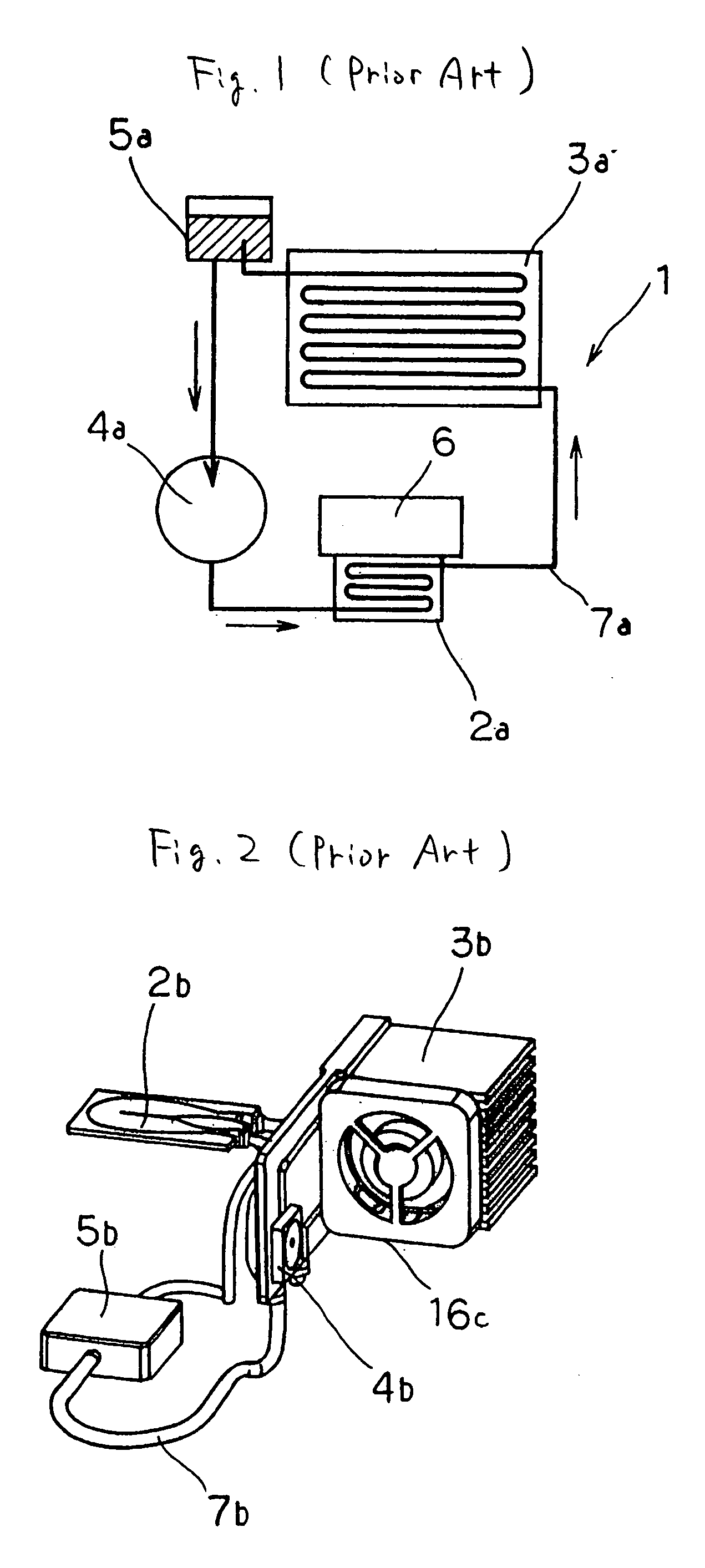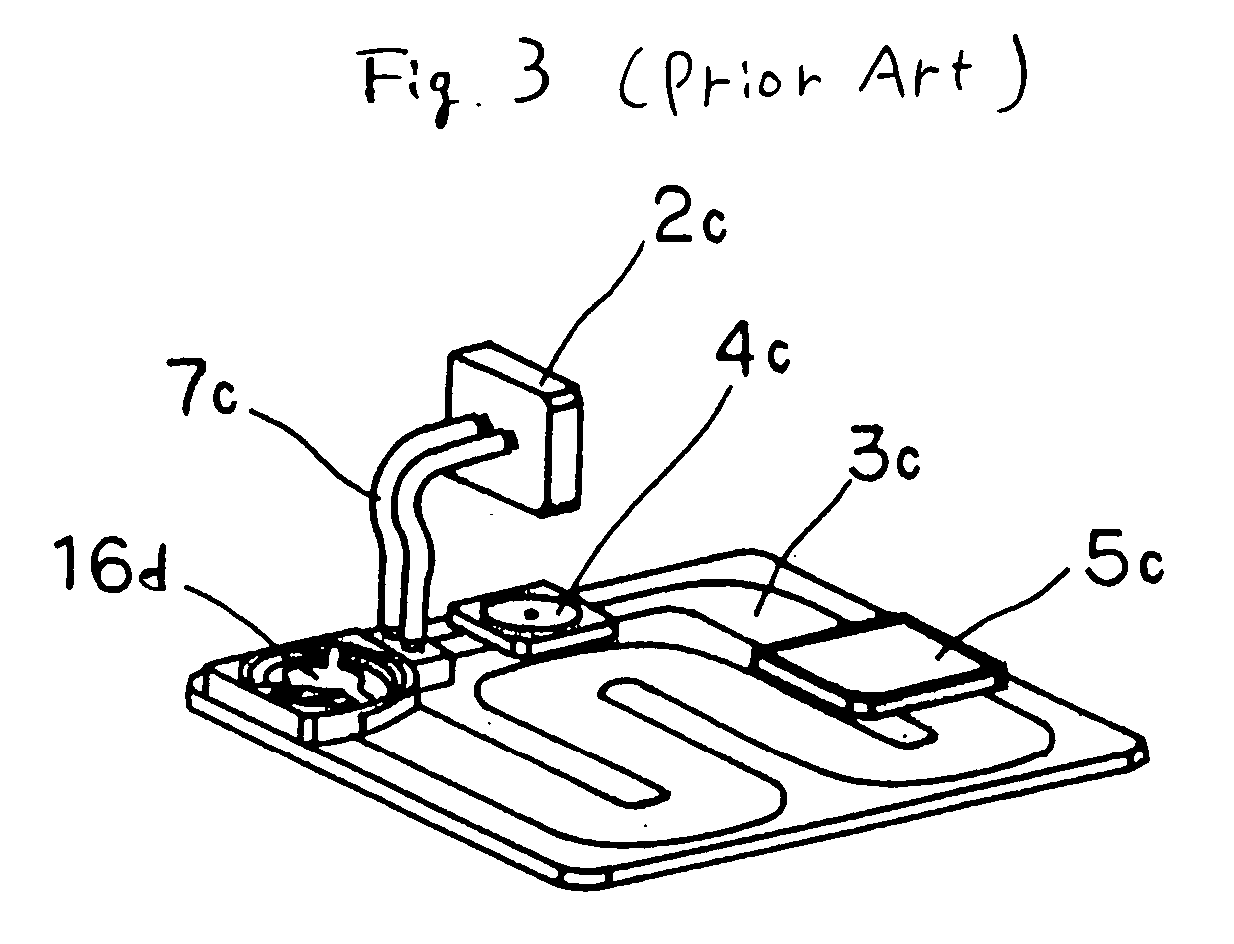Circulation-type liquid cooling apparatus and electronic device containing same
a liquid cooling and electronic device technology, applied in the direction of lighting and heating apparatus, instruments, semiconductor/solid-state device details, etc., can solve the problems of reducing the cooling performance of the system, device-cooling methods based on liquid cooling technology are under investigation, and increasing the amount of heat generated by parts in such electronic devices
- Summary
- Abstract
- Description
- Claims
- Application Information
AI Technical Summary
Benefits of technology
Problems solved by technology
Method used
Image
Examples
first embodiment
[0064] FIGS. 6 to 10 illustrate the structure of a reservoir tank associated with a cooling apparatus according to a first embodiment of the present invention. FIG. 6 generally illustrates the reservoir tank; FIG. 7 illustrates the internal structure of the reservoir tank; FIG. 8 is a front view of the reservoir tank; FIG. 9 is a vertically sectioned perspective view of the reservoir tank; and FIG. 10 illustrates the structure of the reservoir tank when it is filled with a coolant liquid.
[0065] In FIGS. 6 to 10, cooling apparatus 15a of this embodiment comprises radiator 3d, radiation fan 16c, circulating pump 4e, reservoir tank 5e, and heat receiving element 2e such as a cold plate. Reservoir tank 5e is joined to resin tube 7d, which interconnects components of cooling apparatus 15a, for keeping a coolant liquid, retaining an air layer for buffering thermal expansion of the cooling liquid, and trapping bubbles produced in a circulating system, as illustrated in FIG. 6.
[0066] As i...
second embodiment
[0075] FIGS. 14 to 18 illustrate the structure of a reservoir tank that is contained within a cooling apparatus according to a second embodiment of the present invention. FIG. 14 generally illustrates the reservoir tank; FIG. 15 illustrates the internal structure of the reservoir tank; FIG. 16 is a vertically sectioned, exploded perspective view of the reservoir tank; FIG. 17 is a vertically sectioned perspective view generally illustrating the reservoir tank; and FIG. 18 is a diagram for describing the operation of the reservoir tank.
[0076] Reservoir tank 5f of the second embodiment illustrated in FIGS. 14 to 18 further facilitates the movement of the accumulated air through the gap defined by the cut groove formed in the bridge within the reservoir tank disclosed in the first embodiment, and is characterized by a pair of axially symmetric members which are joined to form the reservoir tank.
[0077] Specifically, as illustrated in FIGS. 15 to 17, reservoir tank 5f comprises a pair,...
third embodiment
[0078] FIGS. 19 to 23 illustrate the configuration of a reservoir tank that is contained within a cooling apparatus according to a third embodiment of the present invention. FIG. 19 generally illustrates the reservoir tank; FIG. 20 illustrates the internal structure of the reservoir tank; FIG. 21 is a horizontally sectioned top plan view of the reservoir tank; FIG. 22 is a vertically sectioned, exploded perspective view of the reservoir tank; and FIG. 23 is a vertically sectioned perspective view generally illustrating the reservoir tank.
[0079] Cooling apparatus 15c of the third embodiment illustrated in FIGS. 19 to 23 makes the circulating system compact by positioning the coolant liquid inlet port and the coolant liquid outlet port of the reservoir tank in the first embodiment on the same side, with the intention of facilitating the mounting of cooling apparatus 15c to an electronic device.
[0080] Specifically, in FIGS. 19 to 23, cooling apparatus 15c of this embodiment comprises...
PUM
 Login to View More
Login to View More Abstract
Description
Claims
Application Information
 Login to View More
Login to View More - R&D
- Intellectual Property
- Life Sciences
- Materials
- Tech Scout
- Unparalleled Data Quality
- Higher Quality Content
- 60% Fewer Hallucinations
Browse by: Latest US Patents, China's latest patents, Technical Efficacy Thesaurus, Application Domain, Technology Topic, Popular Technical Reports.
© 2025 PatSnap. All rights reserved.Legal|Privacy policy|Modern Slavery Act Transparency Statement|Sitemap|About US| Contact US: help@patsnap.com



